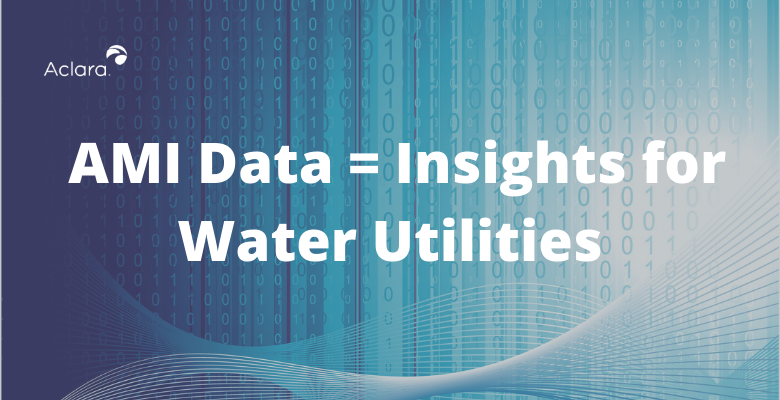More than ever, water utilities are investing in advanced metering infrastructure (AMI) as they seek to improve their current operations and lay the foundation for a system that will accommodate future growth and technology advances.
One of the immediate benefits of AMI, and often the launchpad for its adoption, is its ability to improve the billing accuracy and timeliness. But the benefits of AMI extend far beyond its ability to collect data and enhance billing.
Its power also lies in the insights it provides. This information can be the key to solving other issues that water utilities face. Among these are non-revenue water loss control and the need to enhance customer service through proactive and personalized communications. Analytics can amplify the benefits of AMI in achieving these objectives.
Addressing non-revenue water
Handling non-revenue water is a universal concern among water utilities. According to the U.S. Environmental Protection Agency (EPA), the national average loss from non-revenue water is estimated at 16%. Individual utilities may experience a significantly higher amount – in some cases, 50% or higher.
Analytics can help identify non-revenue water losses including apparent losses (water that is consumed but not measured or paid for) and real losses (leaks in water lines or at device connections). Today, utilities are using a variety of methods, including performing water audits as well as putting their AMI data and systems to work discovering hidden leaks.
Adding sensors such as acoustic leak detectors to the AMI network also is a highly effective way for utilities to mitigate real water loss. These leak detectors enable utilities to listen for and locate underground leaks or tank overflows with precision, and repair minor problems before they escalate.
Early detection is an extremely valuable capability, as up to 75% of leaks in the distribution system never find their way to the surface. Once they do surface, they may show up a significant distance from the actual problem, complicating and escalating the cost of repairs.
Learn more about how utilities are reducing non-revenue water loss, and how understanding the return on investment in leak detection technologies is accelerating their use.
Improving customer service
In addition to improving billing, when coupled with analytics AMI enables utilities to serve their customers proactively, helping them manage their usage and avert problems as well as fostering goodwill. Using analytics, for example, utilities can alert customers to increased usage that may be caused by leaks within their homes. The anomalies can vary from constantly running toilets to other abnormal consumption patterns such as low or zero usage that could indicate meter malfunction or theft.
DC Water, for example, has had great success with a program that notifies customers of unusual water usage. Begun in 2006, DC Water’s program analyzes the data that it collects each day from its Aclara RF™ AMI network to identify and notify customers when it spots atypical consumption. When usage exceeds a specific threshold, the system triggers a notice to the customer over multiple communication channels so that they can remedy any problems.
DC water continues to refine its program. In addition to enabling customers to modify the triggering threshold before a notice is sent, the utility has added a High Usage Notification Alert (HUNA) program to identify when water is running constantly for more than 24 hours. The HUNA program allows DC Water to inform a customer that there is a problem, as no one consumes water continuously over a long time.
Enhancing the value of AMI
Analytics can help extend the benefit of AMI in many other ways, as they can range from descriptive in nature to predictive in scope. For example, they can help optimize utility system operations by analyzing pressure data, maintain water quality by coupling sensors with analytics, or prioritize maintenance through predictive analytics modeling.
Whatever the application, one thing is certain. The increased use of analytics will continue to add significant value to a utility’s investment in AMI while ensuring that the network will be increasingly smart as well as robust.

